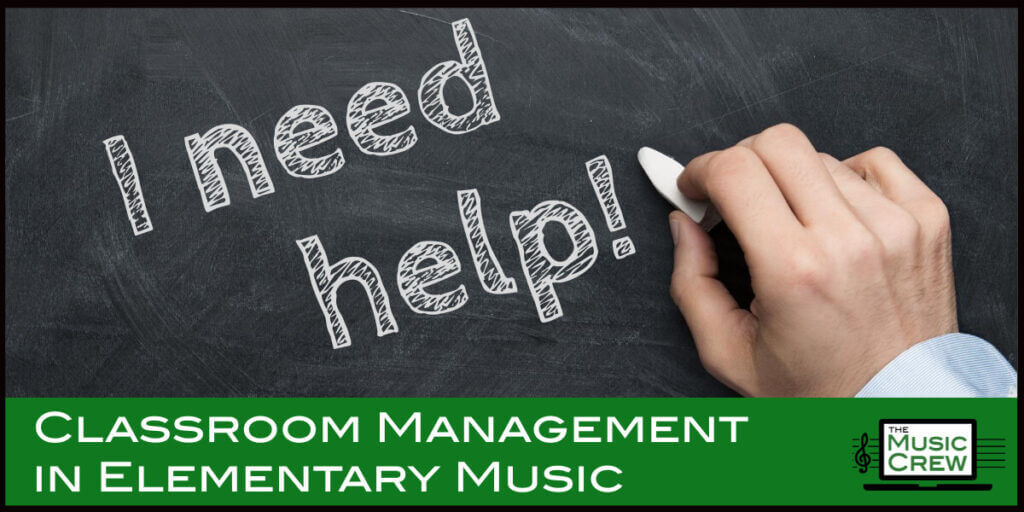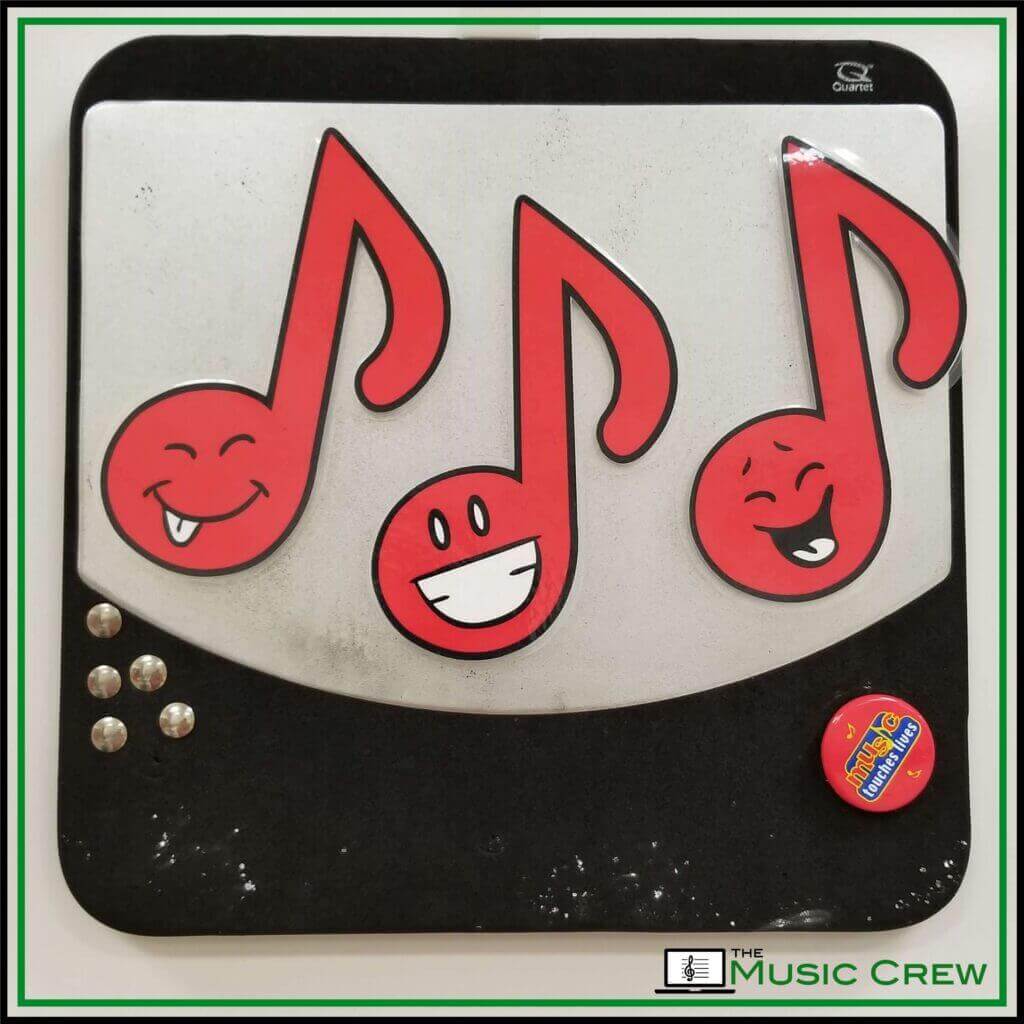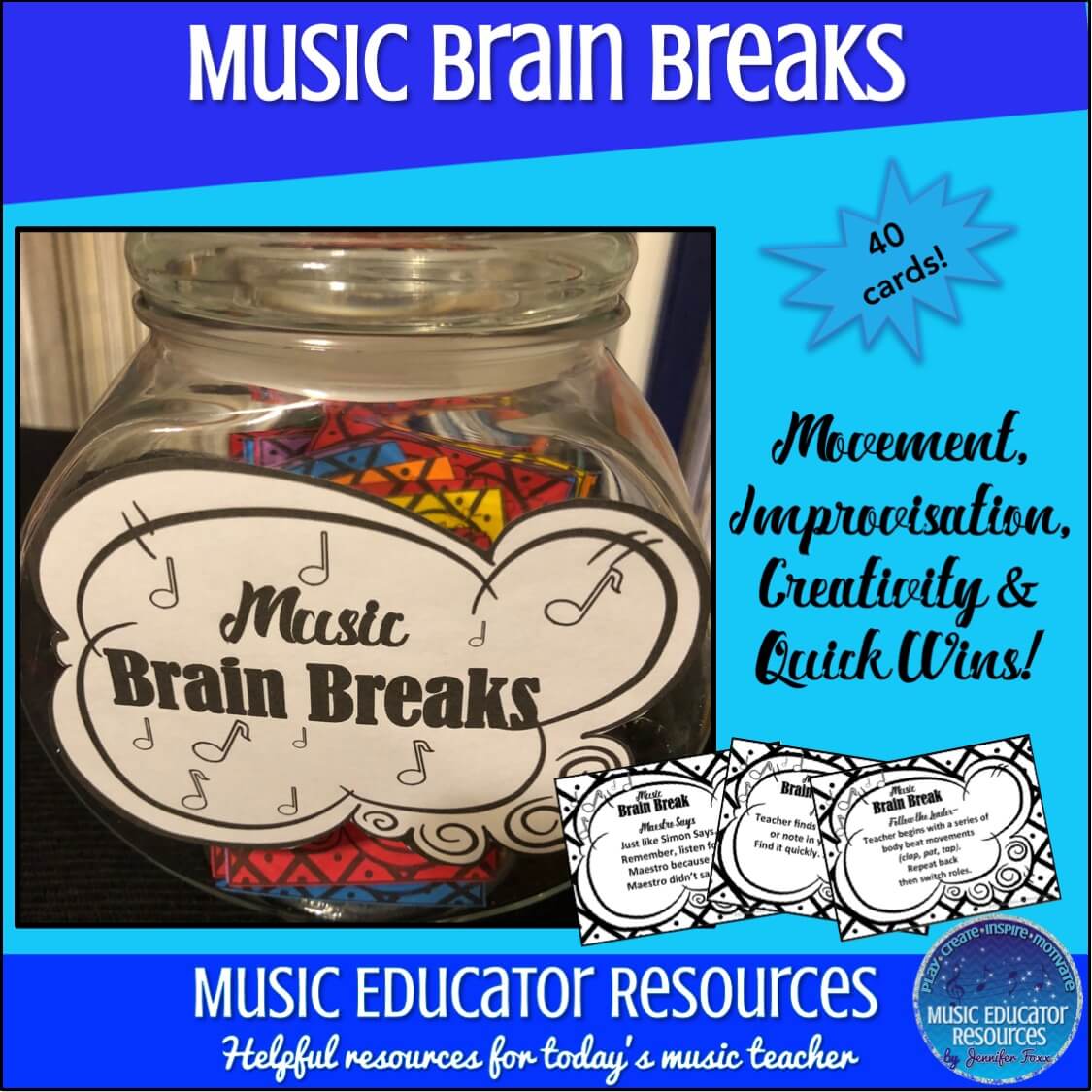It’s 9:00 in the morning, and twenty seven sixth graders just piled into your room. They are animated and social, and learning a new song may not be high on their personal list of priorities. Forty five minutes later, their teacher comes by to pick them up at the same moment that the kindergarten teacher delivers twenty two five year olds who have had a rough morning. She wishes you luck as she heads to the office for a meeting. Next up is second grade, who is waiting patiently in the hallway for the kindergarten teacher to pick up her class- her meeting ran late and she apologizes as she takes the hand of her line leader to head back to class. Does all of this sound familiar? Teaching music at an elementary school is a LOT. We have a rotating door of classes with new groups of students who have very different needs every 30-60 minutes. Each homeroom teacher runs their classroom differently, and it can be very difficult to switch gears so often and match the classroom climate of their homeroom. Finding a classroom management strategy that works for you is crucial to your success as a music teacher.
When I first started teaching elementary music in 2006, I worked at a school that had used clip charts in every classroom. The chart came with the kids to music, and kids moved their clips down if they didn’t behave. I also used a 3-Strikes system for classwide behavior choices. In both of these systems, students were penalized for poor choices, but there was no room for positive reinforcement beyond verbal praise… which is nice to receive, but doesn’t always hold a lot of value for a child. Each year I would tweak my system. First I allowed classes to cancel their strikes if they turned things around. I tried keeping track of the strikes and awarding the class with the least strikes each quarter with a special day. I thought creating competition between classes would help motivate the students, but it really didn’t. I would often have one grade level where all of the classes did great and only one class won, while in another grade none of the classes really deserved a reward, but I had to give one anyhow.
As my school began the journey of PBIS, we did away with the classroom clip charts. We were encouraged to use positive reinforcement instead of negative consequences with our students. It took me a few years to really iron out the details of a classroom behavior management system, but I am really happy with what I am using now. So… what do I do?
On my whiteboard at the front of the room, I have a small silver board. On this board, I have three laminated music notes. Each time a class enters my room, they start with all three notes. Throughout class, students (as a class) can earn “bonus” notes or lose notes based on their behavior and effort during music. If they earn a bonus note, I take one of the three notes and move it up above the silver area. If they lose a note, a bonus note would move back down to the silver area or one of the three notes they started with would move below the silver area. These notes are fluid throughout the entire class. They can move up and down at any time.
After I take attendance, we pick a Mystery Musician. I give two clues about who it is, but don’t give it away. I have a spreadsheet with each class list on it where I can keep track of who has had a turn- no one gets a second turn until everyone has had a turn. During class, I make comments such as “Oh, I love how my Mystery Musician is sitting quietly!” or “My Mystery Musician is being such a kind friend right now.” or “Ooh, my Mystery Musician needs to make some better choices.” These little comments get everyone to check their behavior without calling out an individual student in front of their peers. It’s amazing how helpful this strategy is!
At the end of class, we check to see how many notes we have. If we earned two bonus notes, I would see two notes moved up, and that would be a total of five notes. If we lost a note, I would see one below the other two, and that would be a total of two notes. At this point, I start to give more and more clues about who the Mystery Musician is until the kids figure it out. Here’s where the fun part is- the Mystery Musician gets to play the notes that their class earned on our gong! So if we have five notes, the Mystery Musician plays the gong five times. But if we only have two notes, they only get to play it twice. If we have one or zero notes, we do not play the gong. I do not reveal the Mystery Musician, and we try to do better next time. This is a very rare occurrence.
For several years, I kept track of how many notes each class earned, and when they reached thirty notes, they got to vote on a reward such as choose your own seats, bring a stuffed animal to music, or their favorite, “trick your teacher” where we played a trick on their homeroom teacher when they came to pick up their class. The kids generally enjoyed this, but it was a pain to manage and inevitably some kids didn’t want to do what the class voted on. Since my school uses the PBIS Rewards App (where kids earn points for positive behavior choices), I now just give each student in the class a point for each note their class earned. So if the class had five notes at the end of music, each student gets five points added to their account. The students can cash in their points for items from our school store. This eliminates the arguing over which reward they all want AND means that we don’t lose time from music class to vote and carry out the rewards.
I hope this has given you some ideas for how you can manage your classroom! This system has been in place in my room for several years now, and it works well for my students in grades K-6. I am happy to answer any questions you may have! Just let me know in the comments!
Musically,
Chrissy Hutzel



































Hello! I really love this plan and have adopted it into my classroom. Question: how do you respond when the class as a whole is doing great, but there is one (or two outliers)? I have a few students with severe ADHD who have a lot of trouble managing their behavior, but it’s certainly not on purpose. If the student is struggling and keeps the class from earning positive “notes”, he/she would be ostracized for their diagnosis.
That said, the behavior (blurting/talking during directions/physical space issues/etc.) is very challenging to ignore and I’m really not sure how to manage it. I would love to hear your thoughts on this situation.
Hello! I’m so glad this plan has helped you. I definitely understand the frustration of trying to deal with just one or two disruptive students, though. I have several approaches that work with varying degrees, depending on the student. One thing I will do is compliment the students near them who are making good choices to see if the child who is struggling will try to shape up to earn a compliment. Another option is asking the child if they need a break. This could be in my Rest Area in the classroom or taking a walk outside of the classroom. We have “take a break” lanyards that students can wear so teachers know they have permission to be out in the halls. You can also ask that student to do you a favor and deliver a “very important note” to another teacher or the office if there is a stigma attached to taking a break. Classroom jobs can also help those with ADHD keep busy and channel their extra energy. Collecting papers, taking out recycling, “organizing” the instrument bins, etc. Another approach for older students would be to have a private conversation with them outside of class to see what changes could be made to help them succeed. For example, I’ve given students who need to move preferential seating where they have more space and they’re not front and center distracting others if they need to move. All that said, when I move my notes up and down, I don’t let a single student ruin a good moment. I might make a comment like “I was so impressed with how most of you stayed silent after the song ended!” while moving a note up. The kids who did the right thing are validated, and the one who didn’t doesn’t ruin it for everyone. I do not move a note down for the action of one or two students, as that would not be fair to the rest of the class either. I hope these thoughts help! Let me know if you need more ideas!